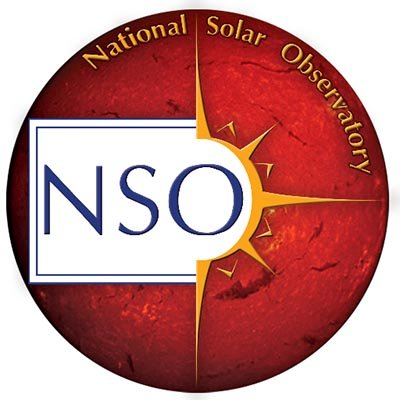
National Solar Observatory
@NatSolarObs
Followers
7K
Following
2K
Media
977
Statuses
2K
The mission of the National Solar Observatory is to advance knowledge of the Sun, both as an astronomical object and as the dominant external influence on Earth
Joined May 2016
☀️ Ka Lā | The Sun, the Earth and Us 🌍 We’re proud to share a new @NSF documentary filmed on Haleakalā, Maui! Discover our timeless connection to the Sun and the groundbreaking science at the NSF Inouye Solar Telescope🎬: https://t.co/bHytc60Bc1
#NSFfunded #InouyeSolarTelescope
0
5
14
What a great week at #AGU25! ☀️ We loved sharing solar science, connecting with colleagues and engaging with the incredible geoscience community. Thanks to everyone who stopped by—excited for the collaborations and discoveries ahead. #NSO #SolarPhysics #Heliophysics #SunScience
0
2
15
Help more borrowers own a home with as little as 3% down and more options to fund down payments and closing costs — make it happen with HomeReady®.
2
2
22
Data by National Science Foundation (@NSF) GONG, operated by the NSO. Additional Credits: Jain/Williams/NSF/GONG/NSO/AURA with contributions by NOAA.
0
2
3
The complex of three active regions that generated several high-energy flares while positioned on the western hemisphere has now moved behind the west limb. There is a strong likelihood that some sunspots from this complex will return to the Earth-facing side in ~12 days.
1
2
3
The latest helioseismic far-side map reveals several active regions that are expected to rotate onto the visible disk within the next week. Currently, these regions are of moderate size, though they may intensify with time.
1
2
1
The most significant event was the X1.1 flare, which launched an Earth-directed CME and triggered geomagnetic storming on 10–11 December.
1
2
1
This complex has since rotated to the far side of the Sun, leading to a marked decline in flare production. Multiple CMEs were detected throughout the period, though only a few contained Earth-directed components.
1
2
2
Several sympathetic M-class flares were also observed from nearby areas over several days. The majority of M-class activity came from a complex of three regions—14294, 14296, and 14298—with region 14294 proving the most prolific.
1
2
2
Solar Activity Report: Dec 8-14, 2025. Solar activity was elevated during the reporting period, highlighted by a single X1.1 flare from active region 14298 early in the week and 16 M-class flares originating from multiple regions.
3
48
165
“Big bets start small.” In Part 3 of our AI-first series, we show how ideation turns hackathon sparks and employee ideas into pilot agents — from simple intake forms to a prospecting agent that gives sellers a “mini product marketer.” Read more.
0
2
6
At Haleakalā, the @NSF Inouye Solar Telescope is transforming how we study our home star ☀️ It functions as a microscope and laboratory, enabling detailed observations of the Sun’s magnetic fields and dynamic processes, helping us understand its impact today and for years to come
0
6
24
Data by National Science Foundation (@NSF ) GONG, operated by the NSO. Additional Credits: Jain/Williams/NSF/GONG/NSO/AURA with contributions by NOAA.
0
2
3
No Earth-directed CMEs were observed, except a full-halo CME linked to the M8.1 flare, expected to arrive between late Dec 8-midday Dec 9. Helioseismic mapping of the far hemisphere shows no evidence of major active regions rotating onto the Earth-facing side in the next 7 days.
1
2
4
Additional events included an M6.0 flare from active region 14300 on Dec 4 and an M8.1 flare on Dec 6 from active region 14299, all in the northern hemisphere. The largest southern hemisphere region, 14294, produced only C-class flares without major activity.
1
1
0
The VSEAT® is revolutionizing rides for so many cyclists. You too can enjoy a smooth, supported ride with no crotch pain! It's time to make the switch, your crotch will thank you. Made in the USA.
2
2
15
Solar Activity Report: December 1–7, 2025 ☀️ Solar activity remained at the C-class flare intensity level throughout the week, characterized by impulsive flares. The most notable event was an X1.9 flare on Dec 1 from active region 14299—the strongest flare of the reporting period
1
5
8
🚨 Exciting news! First coordinated observations of the Sun by @nsf Inouye Solar Telescope and @esa Solar Orbiter now available. https://t.co/UxZxW4uaQV
0
6
22
#30YearsOfGONG: In 1995, the @NSF GONG station in Udaipur, India, came online, completing the network that has since delivered 30 years of continuous solar data. Thank you to our NSO teams and Udaipur Solar Observatory staff for contributing to GONG’s legacy in solar science!
0
1
7
Helioseismic mapping of the far hemisphere shows no evidence of major active regions rotating onto the Earth-facing side within the next seven days. Videos: H-alpha and intensity/magnetogram. Data by @NSF GONG. Credits: Jain/Williams/NSF/GONG/NSO/AURA with contributions by NOAA.
0
1
1
After rotating onto the Earth-facing side, the region produced six M-class flares on Nov 29, along with several high-intensity C-class flares. C-class activity persisted on Nov 30. No Earth-directed CMEs were observed during this reporting period.
1
1
1
Solar Activity Report: Nov 24-30, 2025. Solar activity remained at a low level through mid-week, characterized only by low-intensity C-class flares. Activity increased on Nov 28, when active region 14294 generated an impulsive M5.9 flare while positioned behind the southeast limb
1
3
5
Image Credits: Left image: NSF/NSO/GONG; Right image:
0
1
2
Both @NSF GONG helioseismology (left) and NASA’s Perseverance Rover on Mars (right) spot the same large active region on the Sun’s far side! With Mars behind the Sun, Perseverance's direct view matches GONG’s far-side mapping. The region is likely to rotate into Earth view 11/30.
3
33
131
PECOY Copper (a stock we own in our resources fund) is surging past its 50-day moving average! The company has officially begun its first drilling program at the flagship Pecoy Project, marking the first exploration activity there since 2016. A second drill will start shortly,
1
7
1






